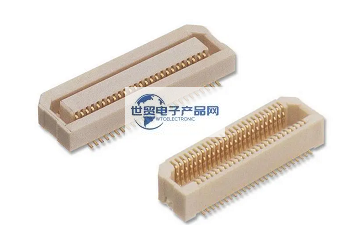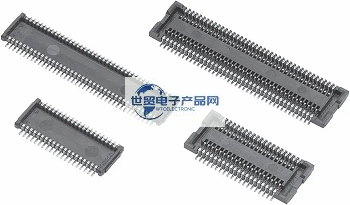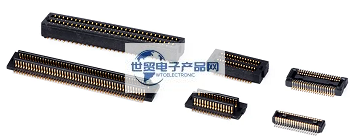Categorization:Product Information
1. Basic performance of board-to-board connectors: The basic performance of board-to-board connectors can be divided into three categories: mechanical properties, electrical properties and environmental properties. 1 Mechanical properties In terms of connection functionality, the insertion and removal force is an important mechanical property. The insertion force is divided into insertion force and pull-out force (pull-out force is also called separation force), and the requirements of the two are different. The greater insertion force and minimum separation force are specified in the relevant standards, which indicates that the insertion force is small from the usage point of view (thus there is a structure with low insertion force LIF and no insertion force ZIF), while if the separation force is too small, it will affect the reliability of contact. Another important mechanical property is the mechanical life of the board-to-board connector. Mechanical life is actually a durability index, which is called mechanical operation in the national standard GB5095. It takes one plug-in and one pull-out as a cycle, and whether the connector can normally complete its connection function (such as contact resistance value) after the specified plug-in and pull-out cycle is used as the basis for judging. The insertion and removal force and mechanical life of board-to-board connector are related to the contact structure (positive pressure), the coating quality of contact parts (sliding friction coefficient) and the dimensional accuracy of contact arrangement (alignment).
2. Electrical properties mainly include contact resistance, insulation resistance, current and resistance. Contact resistance: High-quality electrical connectors should have low and stable contact resistance. The contact resistance of the connector varies from a few milliohms to tens of milliohms. Insulation resistance: An index that measures the insulation performance between contacts of electrical connectors and between contacts and housing. Its order of magnitude ranges from hundreds of megohms to thousands of megohms. Electrical strength or withstand voltage: characterizes the ability of connector contacts or between contacts and the housing to withstand the rated test voltage, depending on the gap between circuits (i.e. contact spacing and creepage distance) and the insulating material used in the connector.

--------------------------------------------------------2. Structural principle of board-to-board connectors: The basic structural parts of board-to-board connectors include the following: contacts, insulators, shells, accessory contacts (contacts) are the core parts of the connector to complete the electrical connection function. Generally, a contact pair is composed of a male contact and a female contact, and the electrical connection is completed by inserting the female and male contacts. The shape of the male contact is cylindrical (round pin), square cylindrical (square pin) or flat (tab) and is a rigid part. The male contacts are generally made of brass and phosphor bronze. The contact part is the socket, which is the key part of the contact pair. It relies on the elastic structure to deform elastically when it is inserted into the pin to generate elastic force to form close contact with the positive contact part and complete the connection. There are many types of jack structures, including cylindrical type (splitting groove, shrinking notch), tuning fork type, cantilever beam type (longitudinal slotting), folding type (longitudinal slotting, figure 9 shape), box-shaped (square jack) and hyperboloid wire spring jack, etc. The insulator is also often called a base or mounting plate. Its function is to arrange the contacts at the required position and spacing, and to ensure the insulation performance between the contacts and between the contacts and the housing. Good insulation resistance, voltage withstand performance and easy processability are the basic requirements for selecting insulating materials to be processed into insulators. The housing, also known as the outer shell, is the outer cover of the board-to-board connector. It provides mechanical protection for the built-in insulating mounting plate and pins, and provides alignment of the plug and socket when plugged in, thereby securing the board-to-board connector to the device. Accessories Accessories are divided into structural accessories and installation accessories. Structural accessories such as clamping rings, positioning keys, positioning pins, guide pins, coupling rings, cable clamps, sealing rings, gaskets, etc. Installation accessories such as screws, nuts, screws, spring coils, etc. Most accessories have standard parts and general parts.

---------------------------------------------------------------------------------------------------------------------------------------------------------------------------------------------------------------------------------------------------------------------------------------------------------- If you have related [connector wiring harness and cable production] purchasing/purchasing needs or want to purchase/understand which connector wiring harness and cable product solutions we can provide, please contact our business staff below; If you have related sales/resources and promotion needs of [Connector Wiring Harness and Cable Production], please click "→ Business Cooperation ←" to negotiate with a dedicated person!